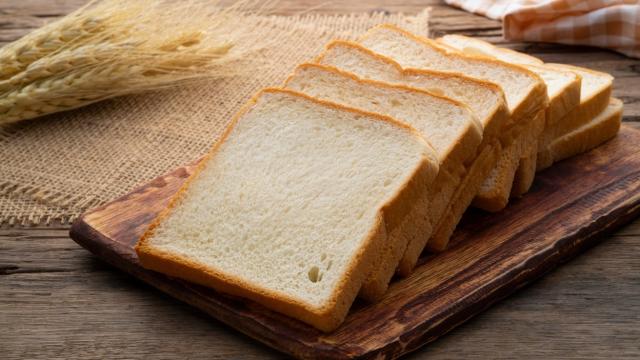My bread experiments lately are noticeably leaning toward the cozy variety. I shall call them comfort breads. Gooey cinnamon buns and soft dinner rolls have all seemed right during these frigid days; not so much, the crusty baguettes of summer picnics. One of the leading traits of a good comfort bread is how soft it is, and how long it stays that way. If you’re looking to add a bit of extra squish to your bread the easy way, reach for your instant potato flakes.
What makes bread soft?
Just as gluten is in charge of stretch and chewiness in bread, starch can be responsible for a soft, tender loaf. Increasing the starch levels can improve the dough’s hydration without weighing it down. I recently wrote about the extraordinary gelatinization benefits tangzhong can bring to bread recipes. This is a technique that increases the starch and captures water via gelatinization when cooking a small mixture of water and flour on the stove top. Instant potato flakes are a step in this direction of increased starch (in this case, potato starch) without having to pre-cook anything. It’s like a cheater tangzhong.
Add instant mashed potatoes to any soft bread recipe
Normally, if you want a soft roll, then you won’t use a recipe for a chewy lean bread. Adding potato flakes to that would be like putting a scarf on with your bathing suit—you’re not really getting what you want from this. Instead, add instant potato flakes to any basic, or soft, bread dough that you’re trying to add a little extra softness to. Think along the lines of sandwich bread, dinner rolls, or doughs enriched with eggs, butter, and sugar.
You can start your experimentation with a recipe that already includes the ingredient, like with my no-knead dinner rolls, or adding it to an existing recipe that doesn’t use it. For bread recipes that use about three cups of flour, add a quarter cup of instant potato flakes. Since the point of the starch is to hold on to extra water and increase the overall hydration of your dough, you’ll also add three tablespoons of water to the recipe’s liquid measurement. Add the potato flakes to the liquid after the yeast has bloomed first.
Keep in mind during your trials that bread recipes vary widely in hydration, so you should be ready to make small adjustments if you have to during the mixing stage. Keep a close eye on the dough once you’ve started to mix in the flour, and if you notice that the dough looks too stiff, add a tablespoon or two of water and continue to assess. If the dough is incredibly sticky, add a tablespoon of flour at a time until it is the consistency it’s meant to be. Proof and bake as directed in the recipe you’re using.
The benefits of adding a small amount of potato flakes are twofold. Your bread will have a more plush feel when it’s fresh out of the oven, and it won’t stale as quickly as an un-potatoed bread. Plus, I find that starch-boosted rolls reheat with great results. Just a quick few seconds in the microwave will bring back that fresh-out-the-oven squishiness. Enjoy your comfort bread with a thick schmear of salty butter.

Leave a Reply
You must be logged in to post a comment.